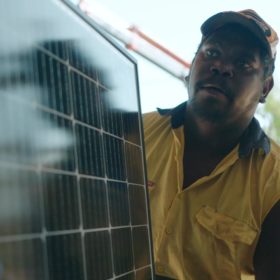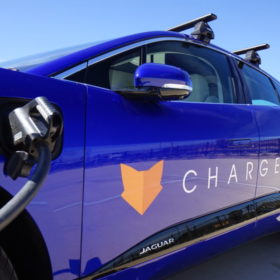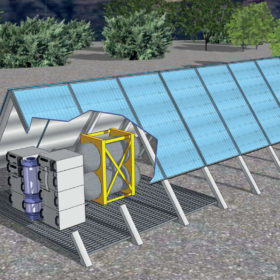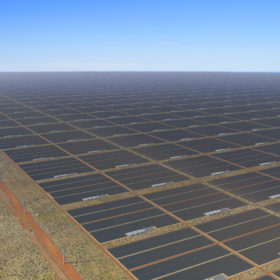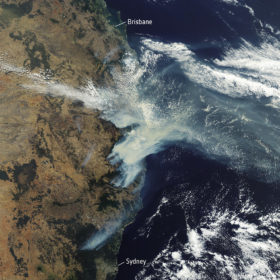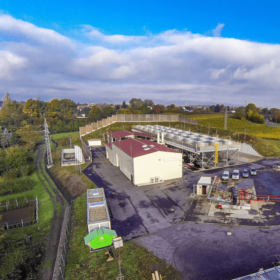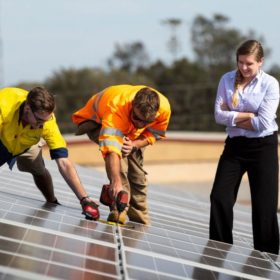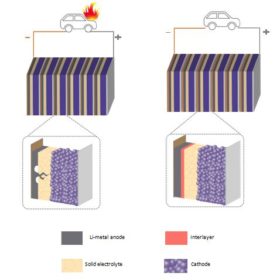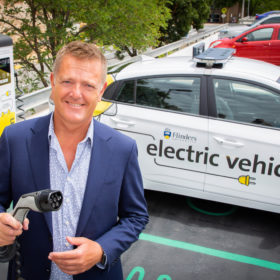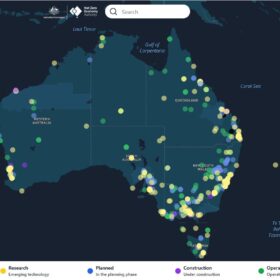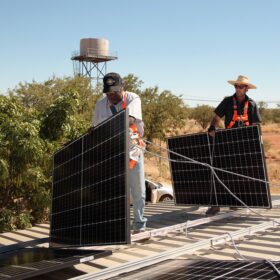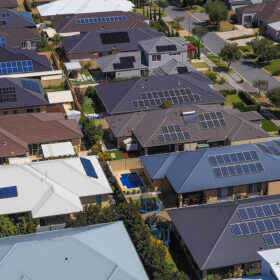Rooftop solar cheaper for Indigenous NT communities than ground mounted, but benefit question remains
Rooftop solar systems are cheaper then centralised ground mounted systems for remote Indigenous communities in the Northern Territory, a new report funded by ARENA and APVI has found. The report, however, did not examine the question of community benefit in its scope – something Alan Langworthy, who has long worked in energy in the NT, told pv magazine Australia is absolutely vital.
EV charging network, Chargefox, acquired by Australian motoring clubs
Australia’s largest EV charging network, Chargefox, has been fully acquired by Australia’s motoring clubs via their company Australian Motoring Services.
Aussie solar-powered direct air carbon capture tech secures backing from Facebook, Google
Australian company AspiraDAC, which uses solar powered Direct Air Capture (DAC) technology to remove carbon from the atmosphere, has been selected to be part of the first round of purchases from Frontier, a program backed by Facebook and Google’s parent companies, Meta and Alphabet.
Queensland airline unveils plan to use hydrogen planes on regional routes
Queensland regional airline Skytrans Airlines and engineering firm Stralis Aircraft plan to develop and trial a hydrogen electric propulsion aircraft by 2026.
Sun Cable announces financial advisors for the globe’s largest solar & storage project
Macquarie Capital, Moelis and MA Financial Group have been appointed as joint financial advisers to the world’s largest solar farm, battery and undersea electricity cable project, the $30 billion plus Australia-Asia PowerLink Sun Cable project in the Northern Territory.
Weekend read: behind Australia’s green swell
In May, Australia voted out its conservative government, which had held power for almost a decade. Instead, it turned to Labor, female independents, and minor parties with far greater climate ambitions. In short, it shifted to an entirely different approach to politics.
Aussie company’s ‘zero carbon’ lithium project tantalises European markets
ASX-listed company Vulcan Energy announced a $76 million equity investment from one of the globe’s top five automakers, Stellantis, which owns brands like Peugeot, Citroen, Fiat, Chrysler and Opel. The deal, Vulcan managing director Francis Wedin told pv magazine Australia is one of number in the works as the European market clambers to secure not just lithium, but sustainably produced lithium, from the Aussie company. Wedin explains precisely how the company’s novel lithium extraction method works and why it finally affords properly green credentials a vital battery resource.
How the new round of SRES changes will alter the makeup of Australia’s solar industry
The Clean Energy Regulator has outlined the second round of changes coming to Australia’s solar rebate program, the small-scale renewable energy scheme (SRES). They primarily involve changing which body will manage solar designer and installer accreditations and who will publish approved solar panel and inverter equipment lists – both of which have formerly been the remit of the Clean Energy Council.
Indian researchers find way to stop dendrites in solid-state lithium batteries
Researchers from the Indian Institute of Science, Bangalore, have found that nanoscopic refractory metal layers like tungsten could improve dendrite growth tolerance in electrolytes of solid-state Li-ion batteries. The team collaborated with researchers from Carnegie Mellon University.
New V2G chargers progress Flinders University’s ‘virtual battery’ vision
South Australia’s Flinders University has installed 20 vehicle-to-grid (V2G) chargers to fully utilise the battery capacity of its growing electric vehicle fleet. It plans to use the distributed EV fleet to supply power to the campus grid in the evening. The initiative is supported by $350,000 (USD 220,000) of funding from the state government.

